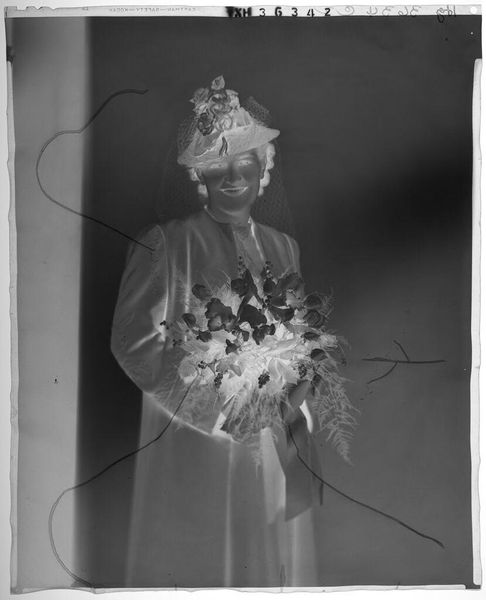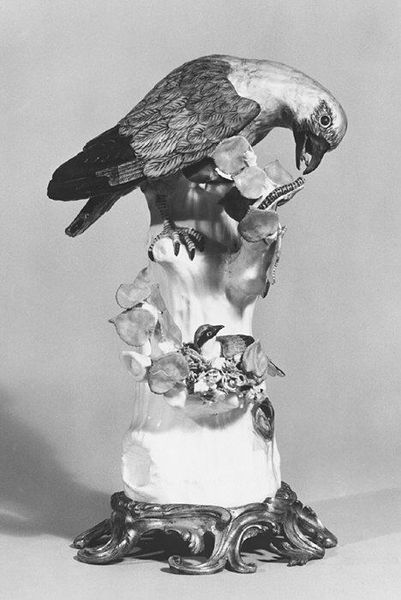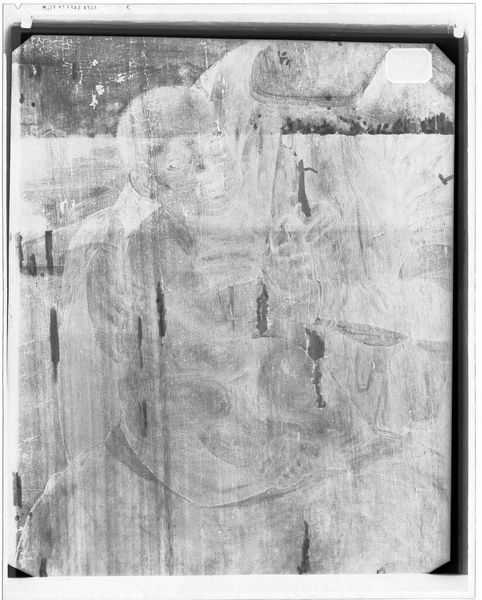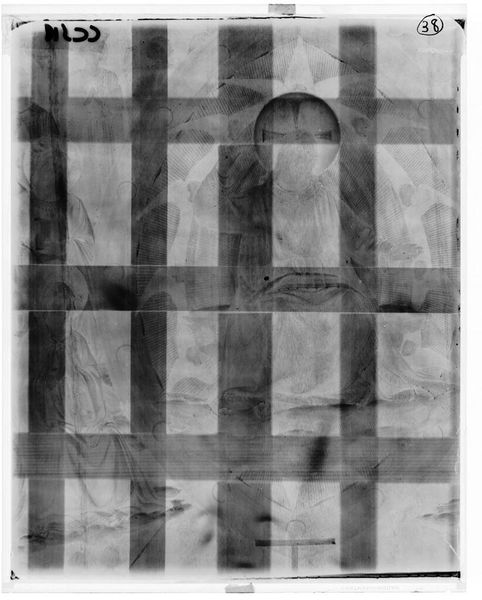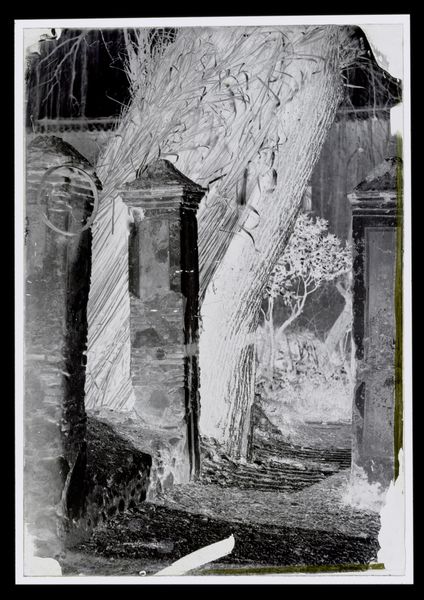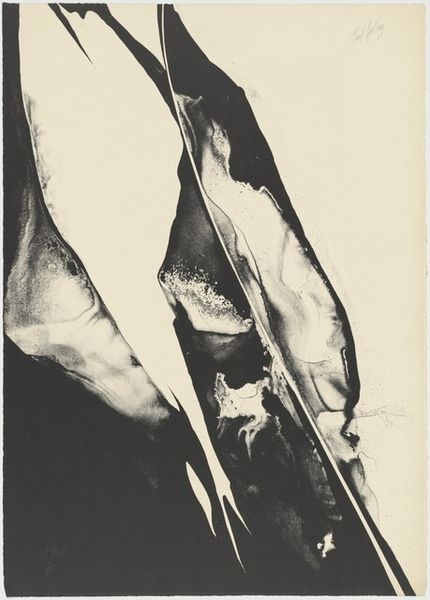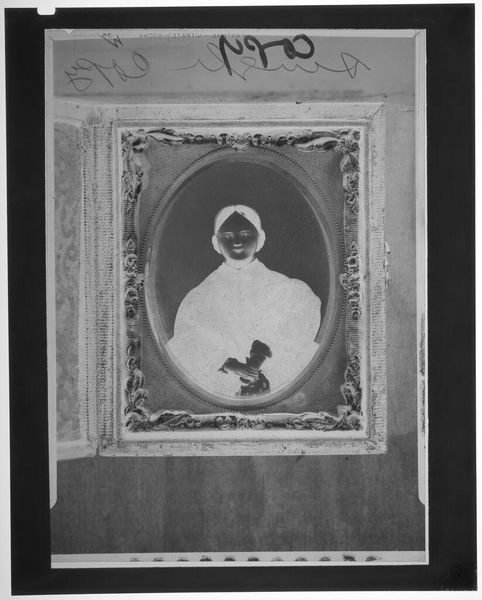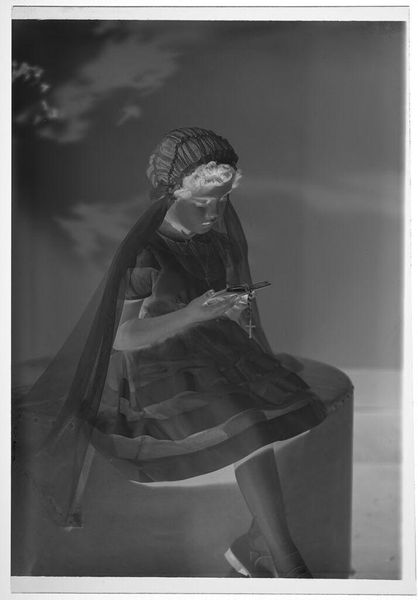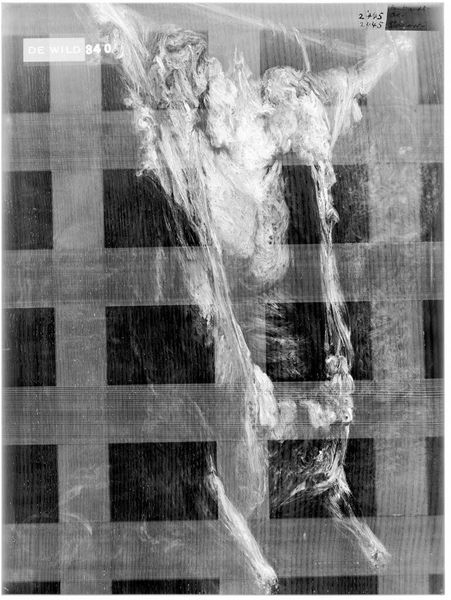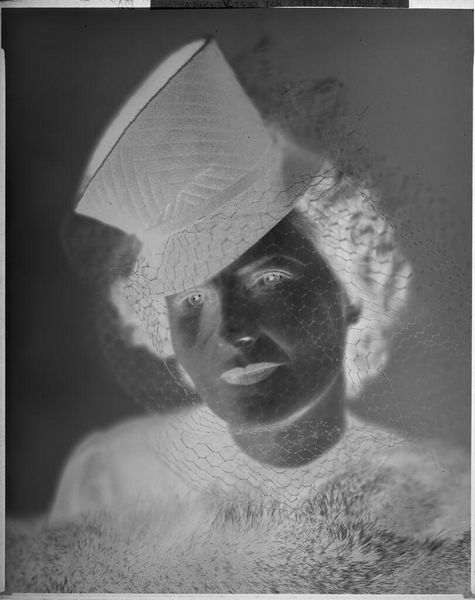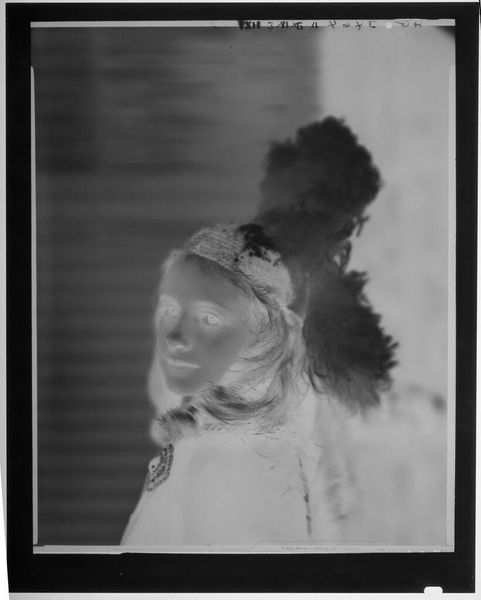
Copyright: Senga Nengudi,Fair Use
Curator: Senga Nengudi’s “Study for ‘Mesh Mirage’” from 1977 really gets under my skin. It’s a photograph, a monochromatic image, of what appears to be a figure shrouded in material, maybe fabric or even… plastic? Editor: Oof, a shrouded figure… Immediately gives me a feeling of restraint, maybe even suffocation. The black and white heightens the drama, right? What’s actually going on with the materials? Curator: Nengudi often explored very humble, commonplace materials. This looks to be plastic sheeting—the kind you’d find protecting furniture—draped and shaped. And, like so much of her work, it blurs the lines between sculpture, performance, and… something deeply personal. Editor: Personal, yes, but let's talk material reality! Think about post-war economies and consumerism. Plastic transforms from a futuristic marvel to mundane wrap. Nengudi seems to wrestle with those implications in "Mesh Mirage", presenting it back to us altered by tension and her unique, careful approach. Curator: It makes you think about impermanence. The inherent fragility of plastic—it tears, degrades… I feel she's inviting us to consider our own vulnerability too. Remember, Nengudi's pieces were activated by the movement of bodies—she thought of her sculptures almost as co-performers. Editor: Precisely! Plastic production boomed precisely because of those human performers and labor, a vital dance. I see parallels to the mesh pieces too. Those used pantyhose remind us so explicitly of bodies stretched to breaking points, repurposed and given a new form. Curator: You can almost sense the phantom limbs within it, can’t you? In this "Study," there’s that haunting feeling of a body present yet utterly obscured. I keep coming back to the idea of hidden identity, a figure concealed and revealed at once. Editor: Exactly. The labor becomes visible—wrinkles, folds, draped textile over and about bodies are clues that indicate action, not just a picture, not just a surface. I love how Nengudi reframes our ideas of use, labor, visibility, or more literally the *stuff* around us, really. Curator: Looking at this photograph after diving deep into her practice… the way Nengudi has manipulated what we think we know is powerful. It reminds us that art-making isn’t some detached process. It is something human. It requires vulnerability, and care, to really give materials new voice. Editor: Absolutely. Materials themselves become active storytellers about production, re-production and the narratives that arise through their constant negotiation, and the social histories of how things come to be!
Comments
No comments
Be the first to comment and join the conversation on the ultimate creative platform.
